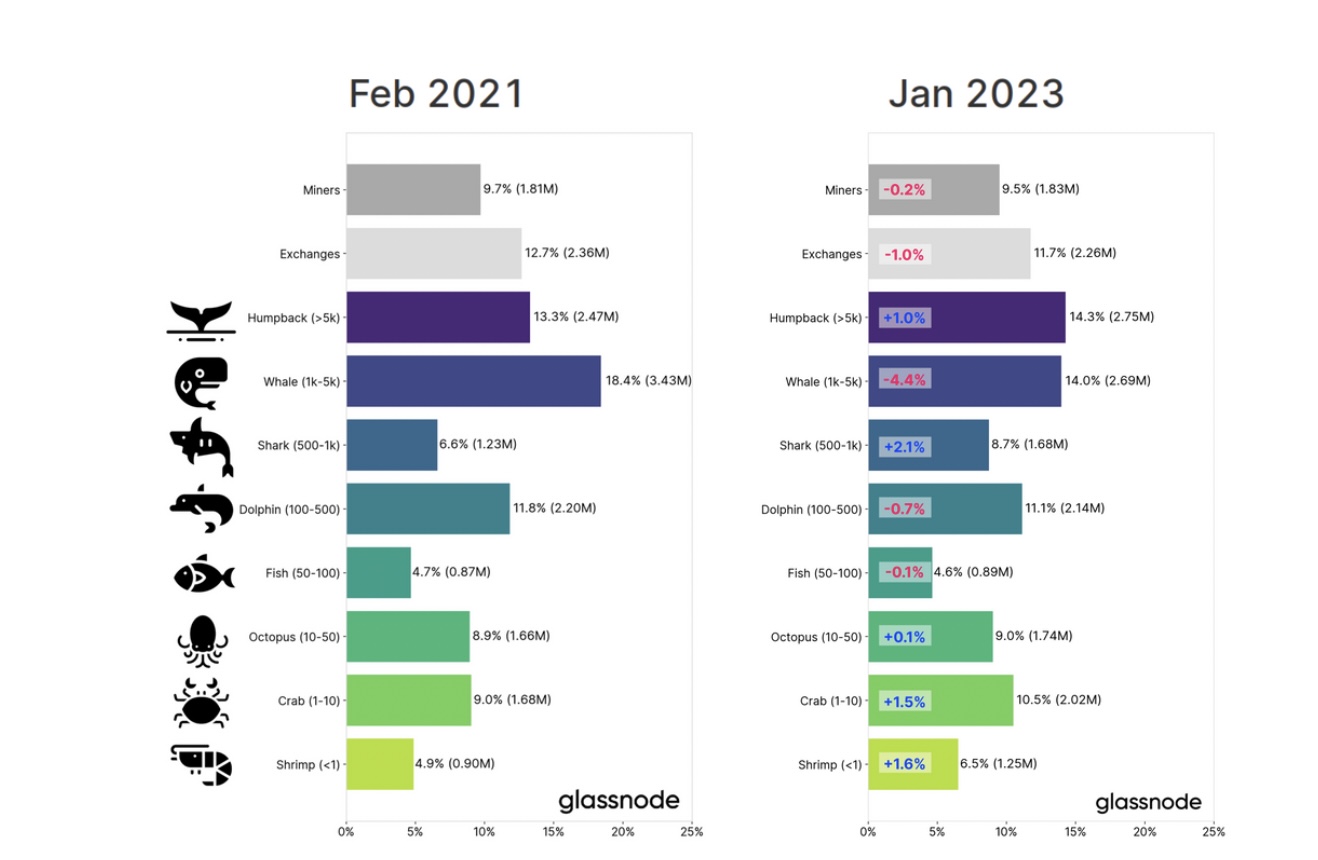Công nghệ Blockchain được giới thiệu vào năm 2008 như một hệ thống phi tập trung, an toàn, minh bạch để quản lý các giao dịch kỹ thuật số. Mục đích chính của nó là cung cấp một giải pháp cho các vấn đề lớn với các hệ thống giao dịch truyền thống, bao gồm niềm tin, bảo mật, phân cấp và hiệu quả. Blockchain đã mở rộng ra ngoài lĩnh vực tài chính và đã được sử dụng trong quản lý chuỗi cung ứng, chăm sóc sức khỏe, trò chơi, phương tiện truyền thông kỹ thuật số và phương tiện truyền thông xã hội, trong số những thứ khác.
Tuy nhiên, ngành công nghiệp blockchain vẫn đang phải đối mặt với những thách thức đáng kể – chẳng hạn như sự thiếu đa dạng, kiểm soát tài sản của một số chủ sở hữu, vấn đề về tỷ lệ băm và mất hứa hẹn phân quyền.
Tỷ lệ băm và tại sao nó là một vấn đề
The cryptocurrency on everyone’s mind — and in the digital wallets of more than 400 million people around the world — is Bitcoin (BTC). Bitcoin’s hash rate is the computing power required to validate transactions and produce new blocks on the Bitcoin blockchain. A high hash rate is necessary to maintain the integrity of the Bitcoin network, but it also presents some significant challenges.
Một trong những vấn đề cấp bách nhất là mức tiêu thụ năng lượng cao cần thiết để duy trì tỷ lệ băm cao. Khi nhiều thợ mỏ tham gia vào mạng lưới, tỷ lệ băm tăng lên – và mức tiêu thụ năng lượng cần thiết để duy trì nó cũng tăng lên. Tác động môi trường của việc khai thác BTC đã dẫn đến những lo ngại trong suốt lịch sử biến động của Bitcoin và trở nên nổi tiếng chính thống.
Một thách thức khác với tỷ lệ băm của Bitcoin là tập trung sức mạnh khai thác trong một vài nhóm khai thác lớn. Khi tỷ lệ băm tăng lên theo thời gian, các thợ đào cá nhân ngày càng khó cạnh tranh với các nhóm lớn này, dẫn đến lo ngại về khả năng các pool này độc quyền mạng và kiểm soát hướng phát triển của Bitcoin
Elizabeth War ren muốn cảnh sát đến cửa nhà bạn vào năm 2024
Ngoài ra còn có khả năng tấn công 51% bởi các nhóm khai thác kiểm soát phần lớn tỷ lệ băm. Nếu một nhóm khai thác duy nhất hoặc một nhóm các nhóm khai thác kiểm soát hơn 50% tỷ lệ băm, họ có khả năng kiểm soát mạng và thực hiện các hoạt động độc hại, chẳng hạn như tấn công hai lần chi tiêu hoặc viết lại lịch sử giao dịch. Điều này thể hiện một mối đe dọa đáng kể đối với tính bảo mật và tính toàn vẹn của mạng Bitcoin.
Cuối cùng, khả năng mở rộng hạn chế của mạng Bitcoin là một thách thức khác liên quan đến tỷ lệ băm của nó. Khi nhiều người dùng tham gia mạng và số lượng giao dịch tăng lên, mạng có thể bị tắc nghẽn, dẫn đến thời gian giao dịch chậm và phí cao. Điều này có thể hạn chế tiện ích của nó như một hệ thống thanh toán khả thi và đã dẫn đến các cuộc tranh luận đang diễn ra trong cộng đồng Bitcoin về cách giải quyết những thách thức về khả năng mở rộng này
Phân cấp ảo có nhiều hình thức
Ngành công nghiệp blockchain đã nhanh chóng rơi vào tình trạng mất cân bằng quyền lực lớn, phản ánh ngành tài chính truyền thống. Sự tập trung của cải và quyền lực trong một nhóm nhỏ các cá nhân đã tạo ra một ngành công nghiệp khác xa với phi tập trung. Những người sớm áp dụng công nghệ blockchain, đặc biệt là Bitcoin, đã có thể tích lũy một lượng lớn của cải thông qua khai thác, đầu tư và giao dịch
This has led to a concentration of wealth and power within a small group of individuals. The complexity of blockchain further limited early adoption to a minuscule percentage of people in the tech world. This concentration of power and wealth has made it difficult for new players to enter the market and challenge the dominance of established players.

The high barriers to entry have also contributed to the imbalance of power in the blockchain industry. The cost of setting up and running a successful blockchain project can be significant, and not everyone has the resources or expertise to do so. This has made it difficult for new startups to enter the market and challenge the dominance of established players.
Network effects also play a role in the imbalance of power in the blockchain industry. Blockchain networks rely on network effects, which means that the value of the network increases as more people use it. This creates a self-reinforcing cycle where established networks become increasingly dominant, making it harder for new networks to gain traction.
From phantom decentralization to the real thing
Despite the challenges facing the blockchain industry, there are ways to address these issues and create a more sustainable, equitable system.
One of the most pressing issues with Bitcoin’s hash rate is its high energy consumption. To address this, the industry could move toward using renewable energy sources, such as wind or solar power, to power mining operations. This would not only reduce the environmental impact of Bitcoin mining but also make it more sustainable in the long run.
Related: CBDCs will lead to absolute government control
To address the issue of limited scalability in the Bitcoin network, efforts should be made to improve the underlying technology. This could include the development of new protocols or the adoption of existing protocols, such as the Lightning Network, which could significantly improve the speed and efficiency of Bitcoin transactions.
Finally, greater efforts should be made to educate people about blockchain technology and its potential. This could be achieved by providing greater access to information and resources, offering training programs and workshops, and working with educational institutions to integrate blockchain into their curricula.
This article is for general information purposes and is not intended to be and should not be taken as legal or investment advice. The views, thoughts and opinions expressed here are the author’s alone and do not necessarily reflect or represent the views and opinions of Cointelegraph.

























